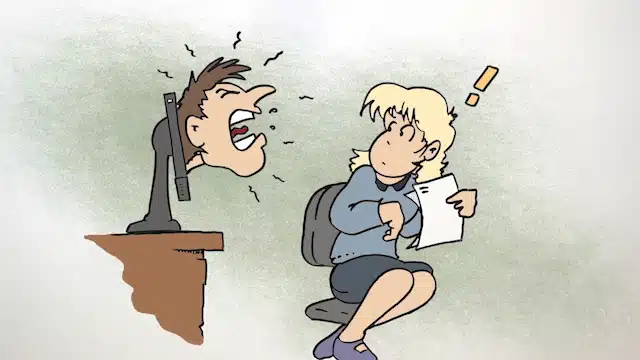The unfortunate reality of working in a customer-facing position is that sometimes, customers will be unhappy with your product, service or company. In some unfortunate situations, those customers might even be irate. As difficult and unfair as these situations can be, they often ultimately boil down to the customer wanting recognition of their problem or frustration from a representative of the company – in this case, you.
In most cases, when dealing with irate or otherwise upset customers, a customer service representative’s main task is managing their feelings. The secondary task – which is often much easier – is to fix their problem. By your evaluation, their anger might not even be proportionate to the problem that they’re reporting. However, the disruption or impact from this problem could feel like a huge deal for them in the midst of other stressors or events in their life.
For this reason and many others, it’s imperative that customer service representatives handle irate customers with a bit more care. Luckily, there are four simple steps you can follow to masterfully navigate these challenging customer situations. We call this the ASAP technique.
Step one: Apologize and Acknowledge
As we’ve already explained, 80% of handling irate customers is managing their feelings. In many situations, simply acknowledging that you can tell the customer is upset and offering a sincere apology will go far in diffusing their anger. Customers are likely to enter the interaction defensively, already prepared to have to fight to be heard by the company or to have their problem fixed.
So, start with an apology to let the customer know right away that you’re on their side and ready to help. For instance, a customer interaction might begin with the customer saying, “Your technicians were supposed to be here at 9am and it is 3:30pm now! I’ve not had any information from your company to let me know why it’s so delayed, and I’m ready to cancel my services from you altogether!”
Using step one of the ASAP technique, you would reply, “I apologize for the inconvenience that this delay must be causing you. No wonder you’re upset.” Rather than needing to be on the defensive still, the customer can start to understand that you’re making steps towards a solution.
Step two: Sympathize and Empathize
Now that you’ve offered a genuine apology and an acknowledgement that the customer’s concerns are valid, it’s time to put yourself in the customer’s shoes and consider how you would feel and how you’d like the situation to be handled.
You might now say, “I can understand why you’re frustrated if you were expecting our technicians hours ago.” This again validates the customers feelings and helps in building rapport with them, even in the midst of heightened emotions.
Step three: Accept Responsibility
The next step towards diffusing the situation is to accept responsibility. While a heartfelt apology can go a long way, the customer also needs to know that the company understands and takes responsibility for the disruption or problem caused. This step also indicates to the customer that you won’t just stop at understanding their frustration – you’re going to work to solve it, too.
For step three, you might now say to the customer, “Let’s see how I can help.” The next key statement here is to reintroduce yourself – “My name is Charlie, and I’m speaking with…?” This reintroduction signals a turning point in the conversation. It offers a fresh start and another personal rapport-building opportunity.
Step four: Prepare to Help
Now that you’ve successfully diffused the situation and you’re speaking with a calmer customer, it’s time to put your plan into action and solve the customer’s problem. A good place to start in developing your plan of action is to ask the customer to describe what happened in more depth so you’re able to fully understand the situation.
To learn more about how to use the ASAP technique to handle irate customers and earn customer loyalty that will last for years to come, contact a ServiceSkills representative today and request your free demo of the Telephone Doctor Customer Service Collection.












